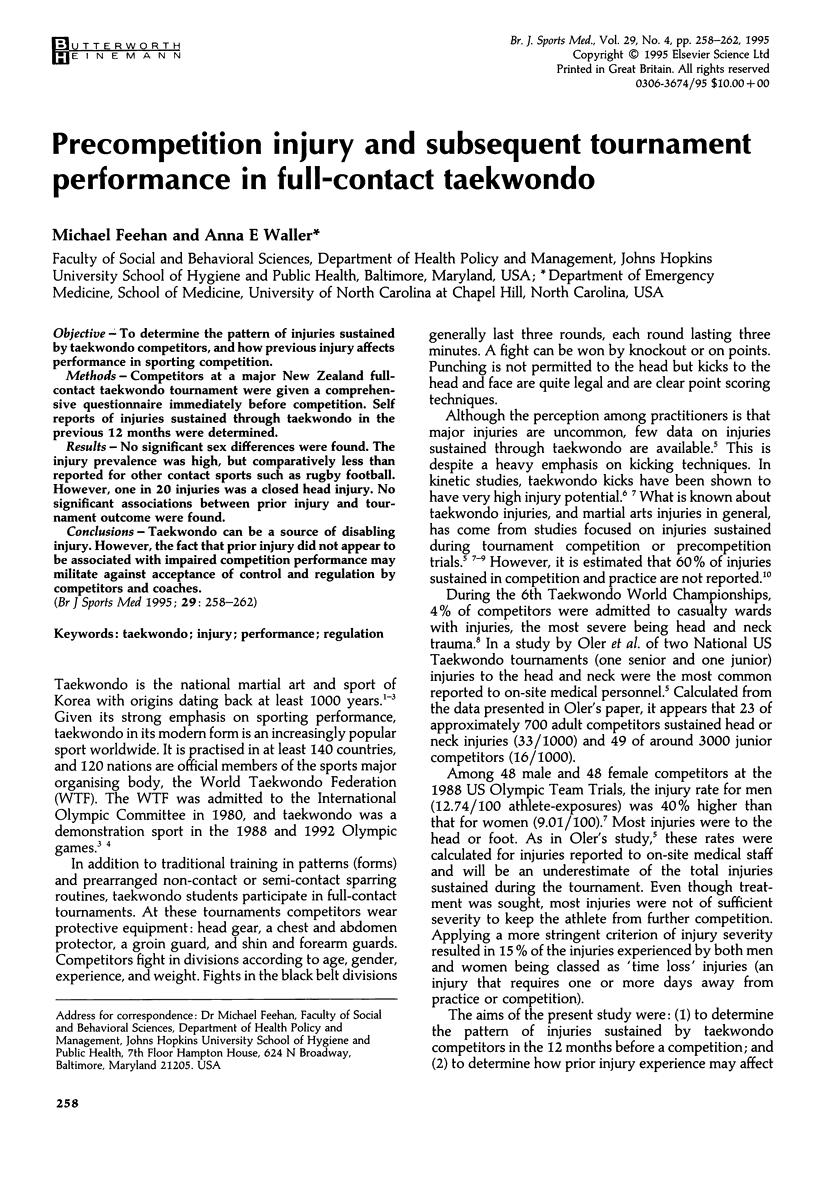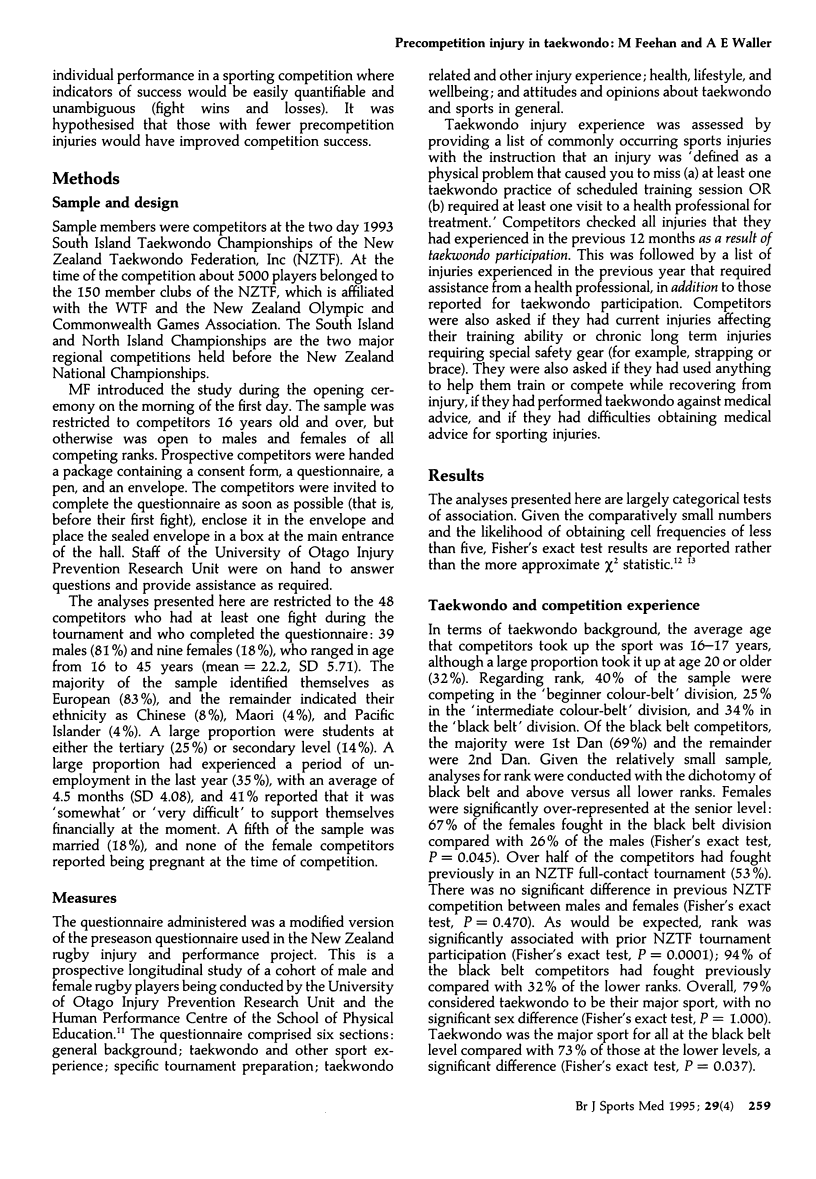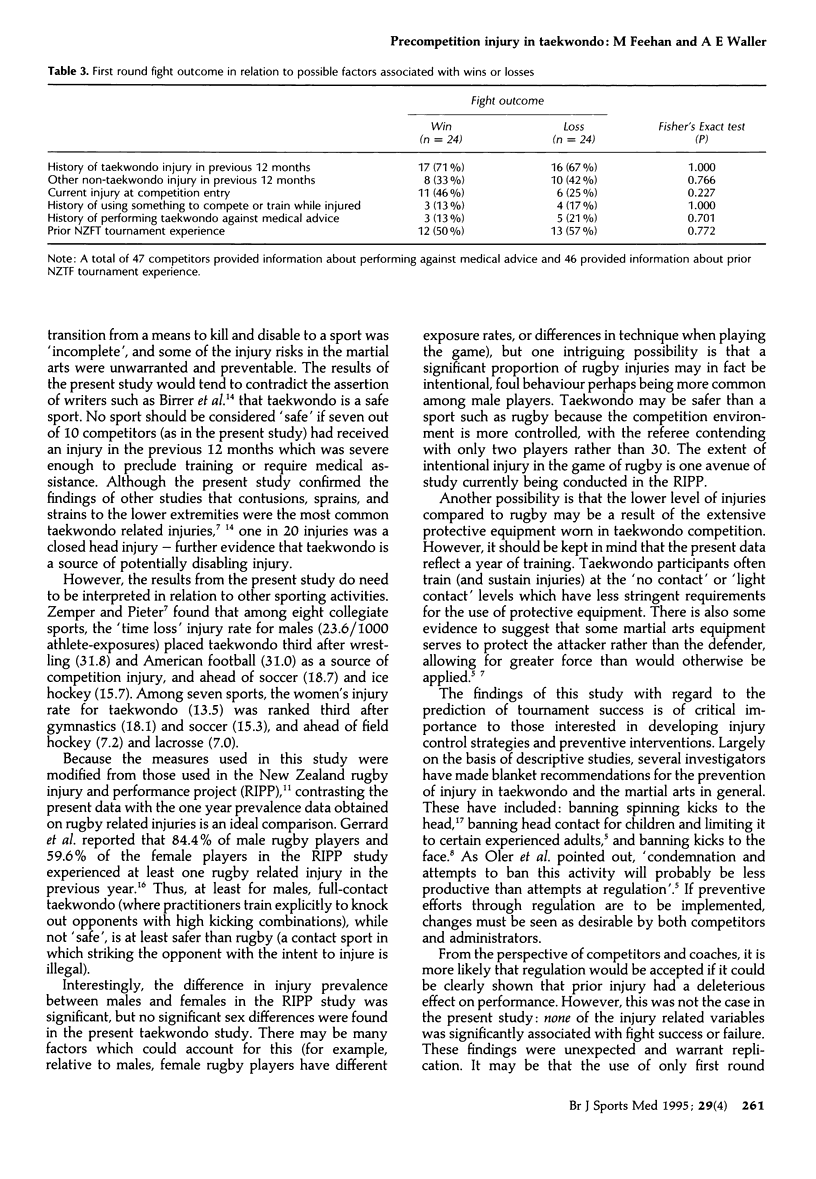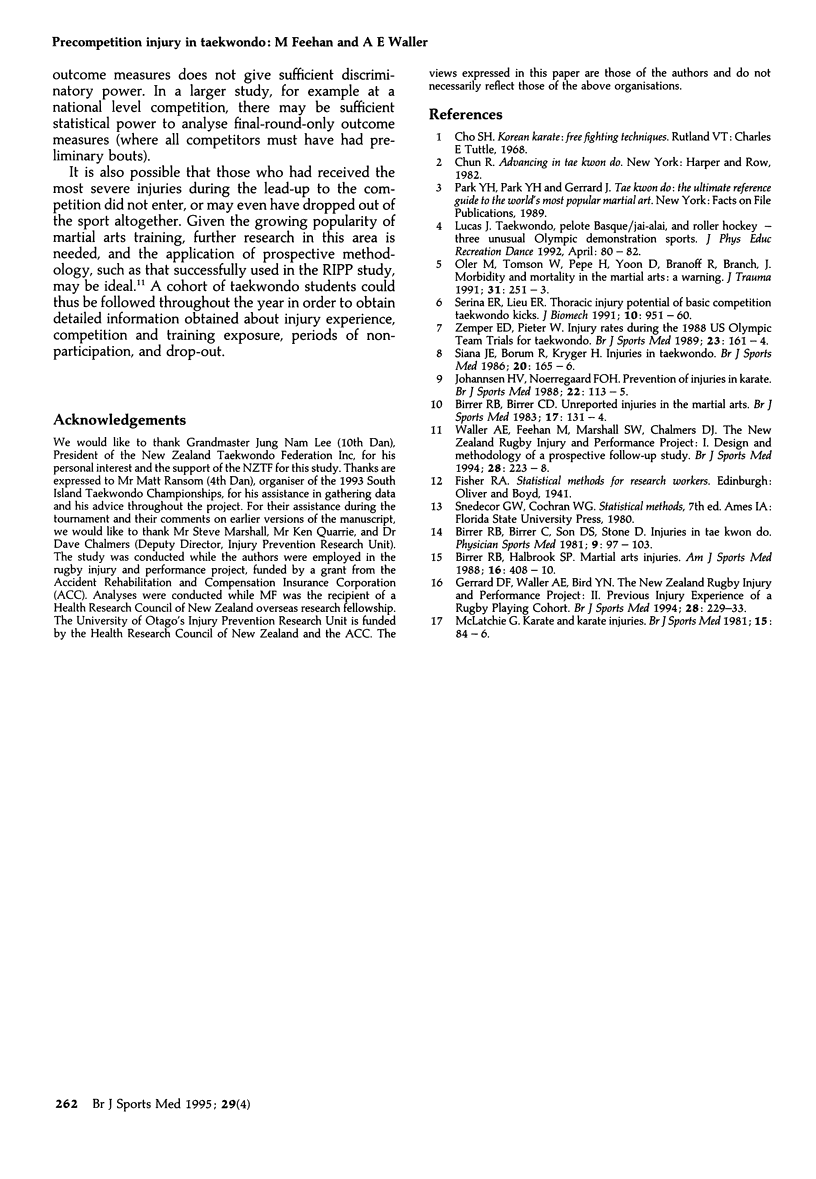Abstract
OBJECTIVE: To determine the pattern of injuries sustained by taekwondo competitors, and how previous injury affects performance in sporting competition. METHODS: Competitors at a major New Zealand full-contact taekwondo tournament were given a comprehensive questionnaire immediately before competition. Self reports of injuries sustained through taekwondo in the previous 12 months were determined. RESULTS: No significant sex differences were found. The injury prevalence was high, but comparatively less than reported for other contact sports such as rugby football. However, one in 20 injuries was a closed head injury. No significant associations between prior injury and tournament outcome were found. CONCLUSIONS: Taekwondo can be a source of disabling injury. However, the fact that prior injury did not appear to be associated with impaired competition performance may militate against acceptance of control and regulation by competitors and coaches.
Full text
PDF




Selected References
These references are in PubMed. This may not be the complete list of references from this article.
- Birrer R. B., Birrer C. D. Unreported injuries in the Martial Arts. Br J Sports Med. 1983 Jun;17(2):131–133. doi: 10.1136/bjsm.17.2.131. [DOI] [PMC free article] [PubMed] [Google Scholar]
- Birrer R. B., Halbrook S. P. Martial arts injuries. The results of a five year national survey. Am J Sports Med. 1988 Jul-Aug;16(4):408–410. doi: 10.1177/036354658801600418. [DOI] [PubMed] [Google Scholar]
- Gerrard D. F., Waller A. E., Bird Y. N. The New Zealand Rugby Injury and Performance Project: II. Previous injury experience of a rugby-playing cohort. Br J Sports Med. 1994 Dec;28(4):229–233. doi: 10.1136/bjsm.28.4.229. [DOI] [PMC free article] [PubMed] [Google Scholar]
- Johannsen H. V., Noerregaard F. O. Prevention of injury in karate. Br J Sports Med. 1988 Sep;22(3):113–115. doi: 10.1136/bjsm.22.3.113. [DOI] [PMC free article] [PubMed] [Google Scholar]
- McLatchie G. Karate and karate injuries. Br J Sports Med. 1981 Mar;15(1):84–86. doi: 10.1136/bjsm.15.1.84. [DOI] [PMC free article] [PubMed] [Google Scholar]
- Oler M., Tomson W., Pepe H., Yoon D., Branoff R., Branch J. Morbidity and mortality in the martial arts: a warning. J Trauma. 1991 Feb;31(2):251–253. [PubMed] [Google Scholar]
- Serina E. R., Lieu D. K. Thoracic injury potential of basic competition taekwondo kicks. J Biomech. 1991;24(10):951–960. doi: 10.1016/0021-9290(91)90173-k. [DOI] [PubMed] [Google Scholar]
- Siana J. E., Borum P., Kryger H. Injuries in taekwondo. Br J Sports Med. 1986 Dec;20(4):165–166. doi: 10.1136/bjsm.20.4.165. [DOI] [PMC free article] [PubMed] [Google Scholar]
- Waller A. E., Feehan M., Marshall S. W., Chalmers D. J. The New Zealand Rugby Injury and Performance Project: I. Design and methodology of a prospective follow-up study. Br J Sports Med. 1994 Dec;28(4):223–228. doi: 10.1136/bjsm.28.4.223. [DOI] [PMC free article] [PubMed] [Google Scholar]
- Zemper E. D., Pieter W. Injury rates during the 1988 US Olympic Team Trials for taekwondo. Br J Sports Med. 1989 Sep;23(3):161–164. doi: 10.1136/bjsm.23.3.161. [DOI] [PMC free article] [PubMed] [Google Scholar]


